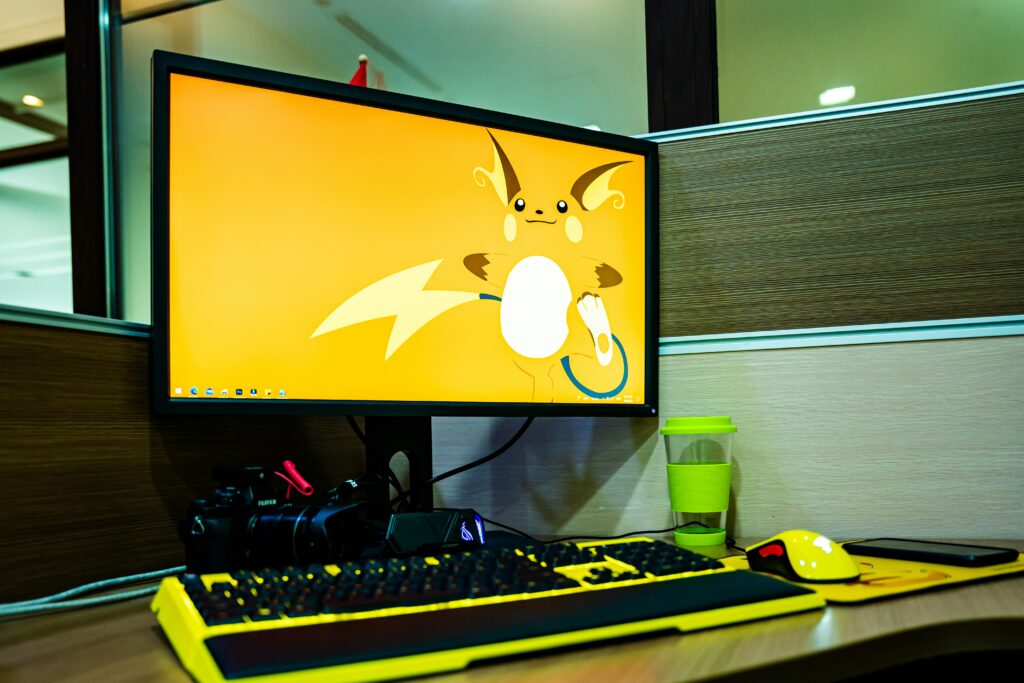The 5 must have Gaming Monitors
In the dynamic world of gaming, the right monitor is your portal to an immersive and visually stunning experience. Elevate your gameplay to new heights with the perfect blend of technology, responsiveness, and vibrant visuals. Whether you’re a competitive gamer or an avid enthusiast, finding the ideal gaming monitor is essential. Join us on a journey as we unveil the top five gaming monitors that redefine the standards of performance. From high refresh rates to crystal-clear resolutions, these monitors are not just accessories; they’re gateways to a gaming universe where every detail matters. Let’s explore the must-have gaming monitors that will transform your gaming setup into a realm of unparalleled excitement and precision.

Factors to consider when choosing a gaming monitor.
Choosing the right gaming monitor is crucial for an optimal gaming experience. Several factors come into play, each influencing how you perceive and interact with your games.
- Resolution:
- Higher resolution provides sharper and clearer images. Consider monitors with resolutions such as Full HD (1920×1080), Quad HD (2560×1440), or 4K (3840×2160) depending on your preferences and GPU capabilities.
- Refresh Rate:
- A higher refresh rate, measured in Hertz (Hz), results in smoother motion and reduces motion blur. Aim for at least a 144Hz refresh rate for a responsive gaming experience, especially in fast-paced games.
- Response Time:
- Lower response times reduce motion blur and ghosting. Look for monitors with response times around 1ms or less for fast-paced gaming, ensuring that pixels change colors quickly.
- Panel Type:
- Different panel types offer varying color reproduction, viewing angles, and response times.
- IPS (In-Plane Switching): Good color accuracy and wide viewing angles, but may have slightly slower response times.
- TN (Twisted Nematic): Faster response times, generally lower cost, but may have narrower viewing angles and less accurate colors.
- VA (Vertical Alignment): A middle ground between IPS and TN, offering decent color reproduction, response times, and contrast ratios.
- Different panel types offer varying color reproduction, viewing angles, and response times.
- G-Sync or FreeSync Support:
- Adaptive sync technologies, like G-Sync (for Nvidia GPUs) and FreeSync (for AMD GPUs), synchronize the monitor’s refresh rate with the GPU’s frame rate, reducing tearing and stuttering for a smoother gaming experience.
- Connectivity:
- Ensure the monitor has the necessary ports for your gaming setup, such as HDMI, DisplayPort, or USB ports. Consider future-proofing by selecting a monitor with the latest connection standards.
- Size and Aspect Ratio:
- Choose a monitor size and aspect ratio that suits your preferences and available space. Common sizes range from 24 to 34 inches, while aspect ratios vary between 16:9 and 21:9.
- HDR (High Dynamic Range):
- HDR enhances contrast and color accuracy, providing a more lifelike visual experience. Look for monitors with HDR support for a more immersive gaming atmosphere.
- Budget:
- Determine your budget and find a monitor that offers the best balance of features within that range. There are excellent options available at various price points.
- Brand and Reviews:
- Research reputable brands and read user reviews to ensure the monitor meets your expectations in terms of reliability, build quality, and performance.

Response time
Response time, measured in milliseconds (ms), is a crucial factor in gaming monitors. Aim for a lower response time, around 1ms, to minimize motion blur and ghosting during fast-paced gaming. While TN panels offer the fastest response times, IPS and VA panels provide better color accuracy and wider viewing angles, albeit with slightly slower response times. Choose a response time that aligns with your gaming preferences and priorities for a smoother gaming experience.

